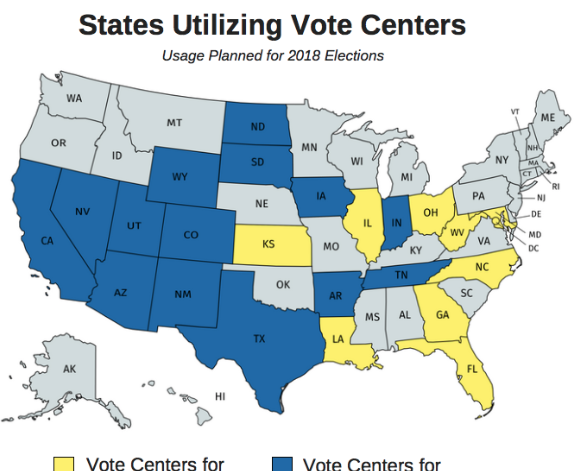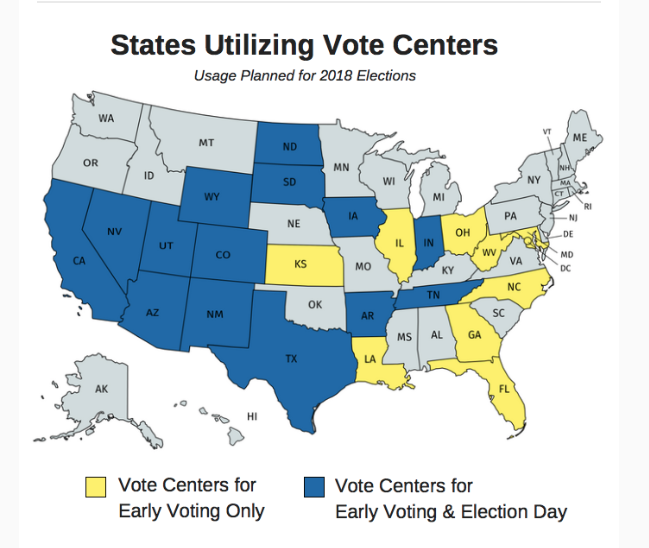Vote Center Success in Other States
Fourteen states currently allow local election jurisdictions to use Vote Centers on Election Day. Several others, including Illinois, utilize universal voting locations during early voting, but require people to vote in-precinct on Election Day.An analysis conducted by Pew Charitable Trusts found that election jurisdictions in Colorado saved an average of 40 percent on election costs after the state implemented voting reforms, including Vote Centers, in 2013. The report explains the efficiencies were in large part due to the use of Vote Centers, and decreases in labor and printing costs accounted for significant portions of the cost reduction. The report also notes that in a survey of over 1,500 voters, 96% reported that they were satisfied, or very satisfied, with their voting experience. Jurisdictions in Colorado have also worked to make Vote Centers work for a variety of demographics. In urban areas, Vote Centers are positioned near heavy traffic areas, larger residential areas, major employers, and city bus routes. In rural areas, they are positioned at recognizable community landmark locations, often the same locations as the prior precinct polling places. Indiana successfully piloted Vote Centers in three counties in 2010. A statewide assessment found that every Indiana county could save at least 20 percent by implementing vote centers, and some counties were projected to save as much as 59 percent. A Ball State University study also found that 80% of voters surveyed in the pilot program preferred Vote Centers to the traditional precinct-based model. In order to become a “Vote Center County” in Indiana, jurisdictions must submit a public transition plan to the County Election Board, take comments at a public hearing, and receive public comments online for a period of at least 30 days. The County Election Board then votes to approve or amend the plan based on public feedback. ICPR would recommend a similar approval process for Illinois election jurisdictions interested in adopting the Vote Center model. | 


